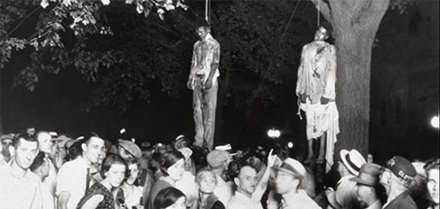9-11
In the morning September 11, 2001, two hijacked passenger jets crashed into the Twin Towers of the World Trade Center in New York City. This was no accident, but rather a series of attacks done by suicide bombers engaged with the Al-Qaeda terrorist group.
The attacks killed all the passengers on board the hijacked planes, and took away 2,974 innocent lives at the World Trade Center. More than 90 countries lost citizens in the attack, and the stock market was closed for a week.
Bhopal India
More than 40 tons of methyl isocyanate spilled from a Union Carbide-owned pesticide factory in Bhopal, India, in 1984, killing more than 20,000 people in the world’s worst chemical disaster.
After the spill, these skulls were researched, presumably for the specific effects the gas had on the brain, at the nearby Hamidia Hospital. The chemical injured not only the people who inhaled it, but also nearby animals (at least 2,000 of them) and trees, whose leaves went yellow and fell off within days.
Twenty-five years later, with people still claiming injury from the disaster yet little corrective action having been taken, the government of India has called for a study into the long-term effects of the spill.
Biafra
When the Igbos of eastern Nigeria declared themselves independent in 1967, Nigeria blockaded their fledgling country-Biafra. In three years of war, more than one million people died, mainly of hunger. In famine, children who lack protein often get the disease kwashiorkor, which causes their muscles to waste away and their bellies to protrude.
In 1937, the Nazis constructed Buchenwald concentration camp, near Weimar, Germany. Placed over the camp’s main entrance gate, was the slogan Jedem das Seine (literally “to each his own”, but figuratively “everyone gets what he deserves”). The Nazis used Buchenwald until the camp’s liberation in 1945. From 1945 to 1950, the Soviet Union used the occupied camp as an NKVD special camp for Nazis and other Germans. On 6 January 1950, the Soviets handed over Buchenwald to the East German Ministry of Internal Affairs.
The SS left behind accounts of the number of prisoners and people coming to and leaving the camp, categorizing those leaving them by release, transfer, or death. These accounts are one of the sources of estimates for the number of deaths in Buchenwald. According to SS documents, 33,462 died in Buchenwald. These documents were not, however, necessarily accurate: Among those executed before 1944 many were listed as “transferred to the Gestapo”. Furthermore, from 1941 forward Soviet POWs were executed in mass killings. Arriving prisoners selected for execution were not entered into the camp register and therefore were not among the 33,462 dead listed in SS documents.
Picture from an Einsatzgruppen soldier’s personal album, labelled on the back as “Last Jew of Vinnitsa, it shows a member of Einsatzgruppe D is just about to shoot a Jewish man kneeling before a filled mass grave in Vinnitsa, Ukraine, in 1941. All 28,000 Jews from Vinnitsa and its surrounding areas were massacred at the time.
This is a famous picture, taken in 1930, showing the young black men accused of raping a Caucasian woman and killing her boyfriend, hanged by a mob of 10,000 white men. The mob took them by force from the county jail house. Another black man was left behind and ended up being saved from lynching. Even if lynching photos were designed to boost white supremacy, the tortured bodies and grotesquely happy crowds ended up revolting many.
Nilgunyalcin Child Vulture
Sudanese child being stalked by a vulture nearby. It is quite obvious that the child was starving to death, while the vulture was patiently waiting for the toddler to die so he can have a good meal.
Nobody knows what happened to the child, who crawled his way to a United Nations food camp. Photographer Kevin Carter won a Pulitzer Prize for this shocking picture, but he eventually committed suicide three months after he took the shot.
Images from the video footage of 12-year-old Muhammad al-Durrah being shot dead in the Gaza Strip. The scene was filmed by a France 2 cameraman.
Staving Boy
World Press Photo of the Year: 1980 Mike Wells, United Kingdom. Karamoja district, Uganda, April 1980. Starving boy and a missionary. About the image Wells felt indignant that the same publication that sat on his picture for five months without publishing it, while people were dying, entered it into a competition. He was embarrassed to win as he never entered the competition himself, and was against winning prizes with pictures of people starving to death.
-
-










3 comments:
thanks for these photo.
kamruddin
Bangladesh
No words left to say anything....!
When I was going through these pics, for a moment, I forgot my problems. They look tiny in front of these heart poking images. May Allah shower his blessings upon all of us. Irrespective of the color, creed, caste, religion.
Post a Comment